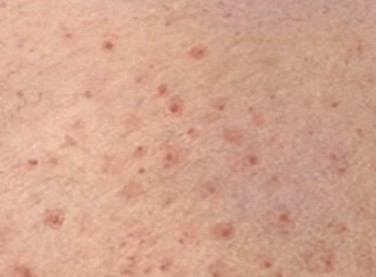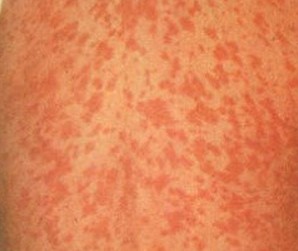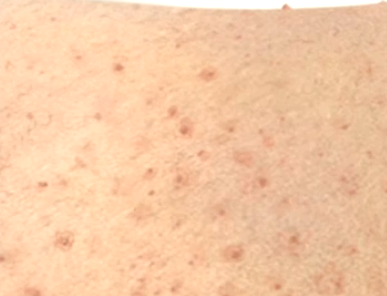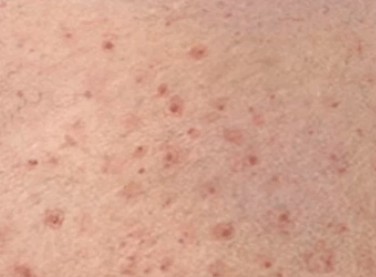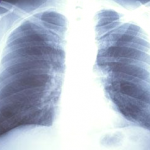Petechial rash is a term used to refer to small purple or red colored flat spots appearing on the skin or in mucus membrane. These rashes often occur due to broken blood vessels beneath the skin. This is technically known as petechiae; sometimes the condition looks similar to rashes. Petechial rash or petechiae usually occur due to physical trauma like consistent vomiting, rigorous coughing or excessive crying. These traumatic incidences can cause petechiae around the eyes and mostly at the periorbital area. Rashes due to petechiae can occur anywhere around the body and caused when skin capillaries bleed under the skin. The cause of blood leakage under the skin can be due to serious or even mild conditions. Petechial rashes may not be a matter of concern but in some cases the condition may serve as a symptom for serious underlying medical anomaly.
Petechial Rash Causes
The primary reason for occurrence of petechial rash includes breakage of blood vessel, especially the capillaries, beneath the skin. As aforementioned rigorous coughing, vomiting consistently and other physical trauma can cause these capillaries to rupture and cause rashes. Certain allergic conditions may also contribute to cause such skin anomalies. Sometimes even medicinal side effects can also cause such issues. Hence, it is ideal to understand what side effects a medicine can have if you are about to use it. Some of the medicines that may cause petechiae include Tagamet, Diuril+Chlotride, Tylenol, Aleve+ Naprisyn, Zyyox, Rimactane+Rifadin, etc.
Other causes of Petechial Rash
- Blood clotting issues
- Thrombocytopenia, which is a condition wherein low platelet count is diagnosed in the body
- Nutritional deficiency like Vitamin B, Folic acid, etc
- Alterations experienced due to normal vaginal delivery
- Disseminated Intravascular Coagulopathy or DIC
- Blood transfusion
- Meningococcal infection or Enterovirus infection etc
- Sepsis or other blood infection
- Liver cirrhosis or other liver disorders
- Endocarditis
- Leukemia a bone marrow related issue
- Infections such as mononucleosis
Symptoms of Petechial rash
Like other conditions petechial rashes may also have associated symptoms. Though the condition may sometime ebb away without any medical intervention, there are severe cases wherein these rashes may be accompanied with additional symptoms as follows
- Fever:-
In serious situations fever are often noticed especially when there are chances of rashes. Fever occurs due to inflammation mostly when bacterial or viral infection is underlying. This symptom is natural biological response to infection and may ebb away with alleviation of infection.
- Anomalous Bleeding
Sometimes along with these rashes unexplainable bleeding is also experienced. The affected individual may notice nasal bleeding, bleeding gums or even intestinal bleeding which are recorded commonly. Intestinal bleeding is often noticed due to dark blood in excreta. Platelets are essential for controlling bleeding; if you do not have platelets in body then you may also bleed to death. It is crucial to treat petechiae effectively as it may reduce the platelet count in your blood which is why bleeding may be experienced.
- Poor healing of wounds
A person affected with petechiae may take longer time get healed of a wound. This again may be attributed to low platelet count.
- Symptoms of Flu
Flu like symptoms and headache are common during petechiae especially if it there is prevalence of bacterial infection. Body pain and weakness is also experienced as the body tries to fight infection. These symptoms may aggravate if the condition is not treated timely.
Other associated symptoms
Along with petechial rashes you may also notice other symptoms such as weakness or the person may become tired very soon. Occluded blood during petechiae affliction keeps important tissues as well as organs from receiving necessary oxygenated blood which is why weakness and fatigue is experienced. In extreme situations organ failure and other terrible complications can be resulted.
Petechial rash treatment
To treat petechial rashes the underlying cause should be ruled out first. For an instance if the condition is determined to be outcome of an infection then your health care expert may prescribe antibiotics. If the condition is present due to insufficient platelet count then experts often suggest blood transfusion technique such as platelet transfusion or other elements of blood. If the rashes are result of medicinal side effect then by simply ceasing or substituting the medicine will be helpful; but this should be done only after consulting a doctor. In some cases cancer or leukemia is also diagnosed along with petechiae; in this situations surgery, chemotherapy or radiation therapy may be needed. In benign cases wherein petechial rashes occur due to injury, often medical intervention is not needed. Just by self care at home the condition can be handled. For example, one can use icepack recurrently on the injury or rashes for around 24 hour would stop the progress of the condition and provide relief.
Since, petechial rashes may be manifestation of any serious underlying anomaly, it is better to meet your doctor and diagnose the condition. This will help you to avoid any possible adversity as well as treat the condition effectively.
Petechial rash pictures
